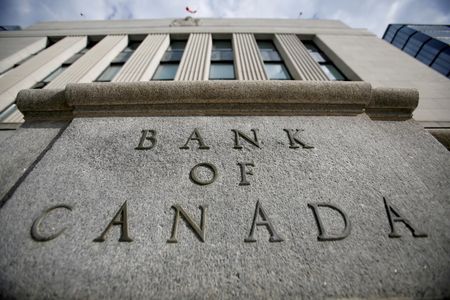By Steve Scherer and David Ljunggren
OTTAWA (Reuters) – Higher interest rates are starting to slow the Canadian economy, the Bank of Canada said on Tuesday, putting pressure on households with elevated debt and people who recently bought a home with a variable-rate mortgage.
“It will take time to get back to solid growth with low inflation but we will get there,” Senior Deputy Governor Carolyn Rogers said in a speech at the University of Ottawa.
The Bank of Canada raised rates by 50 basis points last month to fight high inflation, lifting the policy rate to 3.75%, the highest since the 4% level seen in January 2008. It also forecast growth would stall from the fourth quarter this year through the middle of next year.
Rogers said the bank was monitoring how a combination of high home prices and high household debt – both longstanding economic vulnerabilities in Canada – could affect the stability of the financial system.
“The risk of a trigger that may affect financial stability has increased” as rates have gone up, she said.
“But there are good reasons to believe the system as a whole will be able to weather this period of stress and remain resilient,” she added, citing reforms taken since the global financial crisis to shore up the system.
Money markets have fully discounted a further 25 basis points of tightening by the Bank of Canada at its next policy decision on Dec. 7 and see a 20% chance of a larger move of 50 basis points.
Those who will struggle most with the rate hikes are new homeowners who bought when prices were high during the pandemic with variable-rate mortgages, Rogers said, a number estimated to be about 670,000.
“This is not a large share of households,” Rogers said.
After a blowout job gain report for October, Canada’s annual inflation rate held steady that same month at 6.9%, matching analyst forecasts, while core inflation measures were mixed, data showed last week.
In Canada, three-quarters of variable rate mortgages have fixed payments until their payments cover only interest, and not any portion of the principal, which is called the trigger point, according to a research paper published by the central bank.
Once fixed-rate mortgages hit the trigger point, lenders can ask them to pay more. Some 50% of those who have variable-rate mortgages, or about 13% of all Canadian mortgages, have already seen their payments reach the trigger point, the paper said.
If rates rise by 50 basis points, 65% of variable rate mortgage holders, or 840,000 loans and about 17% of all mortgages, could reach the trigger point, it said.
(Reporting by David Ljunggren and Steve Scherer, editing by Deepa Babington)

